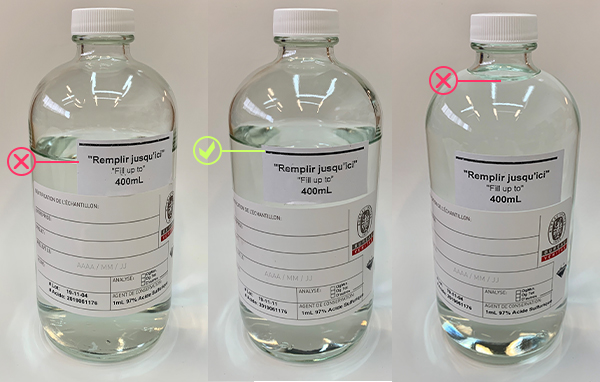Laboratory
The Determination of Oil & Grease in Water in Quebec
Feb. 13 2020
The Centre d’Expertise en Analyse Environnementale du Québec (CEAEQ) published a new version of the analytical method MA. 415 - HGT 2.0, Détermination des huiles et des graisses dans les eaux : méthode gravimétrique (Gravimetric method for the determination of oil and grease in waters) in Quebec. This new version of the method contains new instructions, aimed at standardizing practices across accredited laboratories. Different mandatory elements were incorporated and must absolutely be followed, with no deviations.
The most important change is the analytical sample volume requirement. The analysis of oil and grease now requires a minimal sample volume of 400 ml, and the sample must be extracted in its entirety. Due to the low solubility of oil and grease in water and to their adsorption to the glass containers, it is necessary to include the sampling bottle for the extraction and analysis of the water.
In order to meet the requirement of this ministry reference method and to ensure that the minimum volume of 400ml will always be extracted, we’ve made a change to the 500 ml (total volume) sampling containers. You will note that the sampling container for oil and grease now comes with a white label that shows a black line indicating the “Fill up to” volume requirement. The image below shows the desired volume of water and headspace volume required for this analysis.
In the event that the sample is received with <400ml of water volume, we will have the obligation to make a notation in the analytical certificate of analysis, indicating that the method requirements could not be met.
In addition, it is also important not to surpass the 400 ml requirement, as a 50 ml minimal headspace is required in order to be able to extract the water in the original sampling jar. Where the sample volume is > 400ml, and in the event that the headspace volume cannot permit extraction of the water in its original jar, the laboratory will need to modify the extraction process in order to still meet the prescriptive requirements of this new method. This may imply analytical delays for the results and may also require additional fees.
Thank you for helping us transition over to this new method requirement. If you require any additional information, please contact your project manager or the customer service support team.
